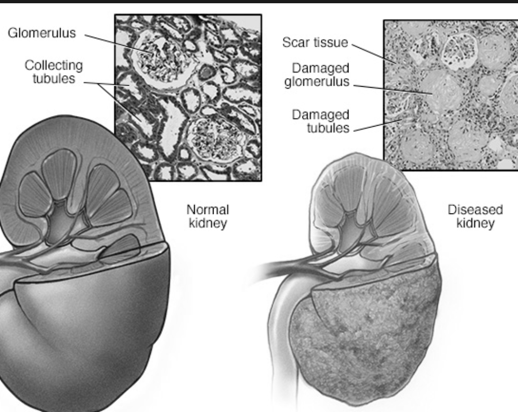Recombinant human erythropoietin, known as EPO or epoetin, transformed the lives of dialysis patients in the late 1980's. Before that time, many of them required blood transfusions to treat severe anemia.
EPO can restore normal hemoglobin levels to anemic patients by increasing red blood cell production in the bone marrow. Athletes soon realized that EPO could work as a performance enhancing drug. Doctors also noted that EPO could treat anemia from causes other than kidney failure.
Kidneys do more than filter the blood; they also monitor and help regulate blood pressure and red blood cells. Healthy kidneys produce EPO to maintain the supply of red blood cells. Dialysis does not replace this part of kidney function. But EPO can be produced by cultures of Chinese hamster ovary cells that carry genes for this human protein. Over the last 20 years, research has continued into variations of EPO. This class of drugs is called erythropoiesis-stimulating agents, or ESA. Major drug brands available today are:
1. Procrit (epoetin alfa)
2. Epogen (epoetin alfa)
3. Aranesp (darbepoetin alfa)
These are all injectable, and must be stored at low temperature.
Research on dialysis patients demonstrated that ESA can do too much of a good thing if it restores hemoglobin levels to the normal range, which is 12.1 to 15.1 g/dL for females and 13.8 to 17.2 g/dL for males. A clinical trial in 1998 was stopped early when investigators saw that too many patients died in the group using ESA to keep their hemoglobin in the normal range. A comparison group, on lower doses with a lower hematocrit target, had better outcomes. A similar study on predialysis patients was also terminated early for the same reason. The target range for hemoglobin is now 10 to 12 g/dL (mildly anemic) for kidney failure patients on ESA.
Anemia is often a problem for cancer patients, and many studies have compared ESA to transfusions for these patients. After reviewing 52 studies, a Canadian research team concluded that ESA is not recommended for cancer-related anemia because the death rate was higher for patients on ESA in these trials.
The FDA provides information on the risks and benefits of these agents at the web address given below.
References:
FDA information on erythropoiesis-stimulating agents:
http://www.fda.gov/Drugs/DrugSafety/PostmarketDrugSafetyInformationforPatientsandProviders/ucm109380.htm
Macdougall IC, “Novel erythropoiesis-stimulating agents: A new era in anemia management”, Clin J Am Soc Nephrol 2008; 3:200-207.
Demirjian SG et al, “Anemia of chronic kidney disease: When normalcy becomes undesirable”, Cleveland Clinic Journal of Medicine 2008 May; 75(5):353-356.
Tonelli M et al, “Benefits and harms of erythropoiesis-stimulating agents for anemia related to cancer: a meta-analysis”, Canadian Medical Association Journal 2009 May 26; 180(11): E62-E71.
Linda Fugate is a scientist and writer in Austin, Texas. She has a Ph.D. in Physics and an M.S. in Macromolecular Science and Engineering. Her background includes academic and industrial research in materials science. She currently writes song lyrics and health articles.





Add a CommentComments
There are no comments yet. Be the first one and get the conversation started!